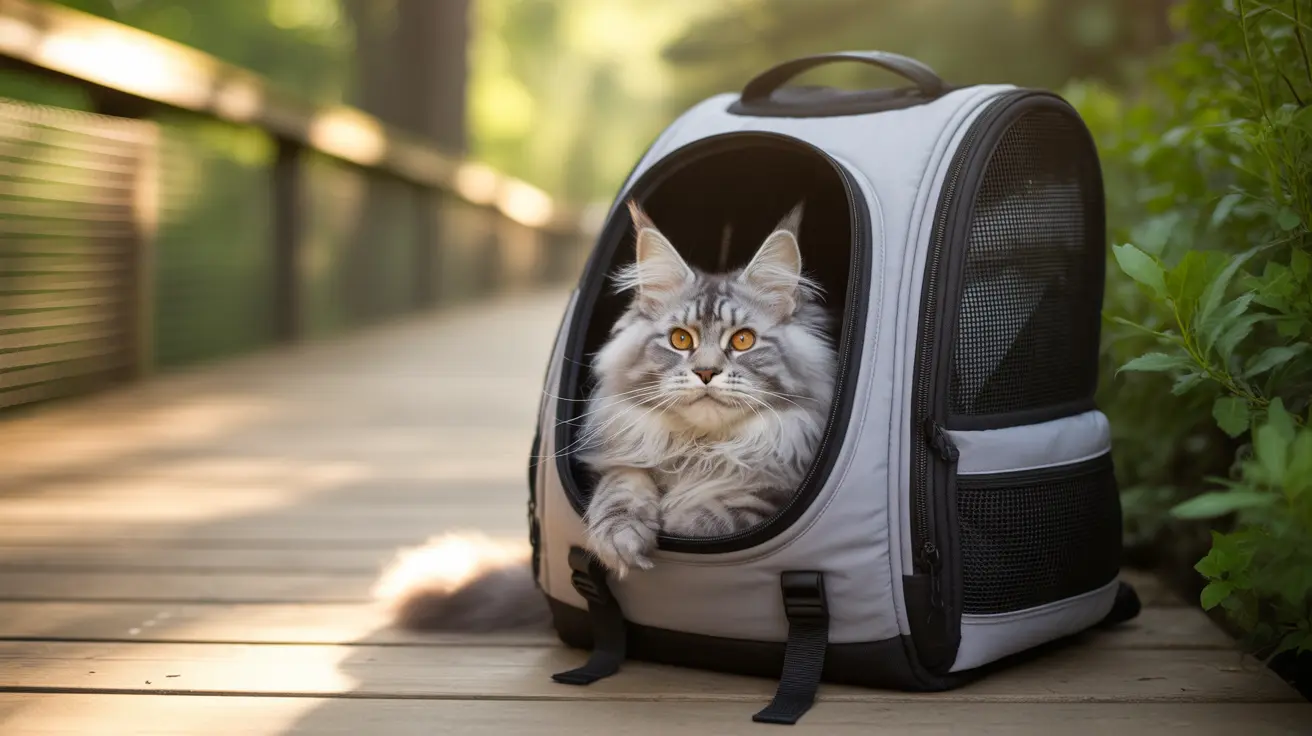As more pet parents seek ways to include their feline friends in their adventures, cat backpacks have emerged as a popular transportation option. However, many cat owners wonder: are cat backpacks safe? This comprehensive guide will explore the safety considerations, benefits, and potential risks of using cat backpacks for your beloved pet.
Understanding the safety aspects of cat backpacks is crucial for any pet owner considering this mode of transportation. While these carriers can be a convenient and enjoyable way to transport your cat, their safety depends on several key factors, including proper design, appropriate use, and your cat's individual temperament.
Essential Safety Features of Cat Backpacks
When evaluating cat backpack safety, several crucial design elements must be present:
Proper ventilation is paramount - look for backpacks with multiple mesh panels or windows that allow consistent airflow. Avoid fully enclosed plastic "bubble" designs that can trap heat and cause dangerous temperature buildup.
The backpack should be spacious enough for your cat to stand, turn around, and lie down comfortably. A cramped carrier can cause stress and physical discomfort during transport.
Proper Usage Guidelines for Maximum Safety
Even the best-designed cat backpack is only safe when used correctly:
- Keep trips short, ideally under 2 hours
- Never leave your cat unattended in the backpack
- Always use a safety harness and internal tether
- Monitor your cat for signs of distress
- Avoid use during extreme weather conditions
Benefits When Used Correctly
When proper safety measures are followed, cat backpacks can offer several advantages:
They provide a secure way for indoor cats to experience the outdoors while remaining protected from environmental dangers. The elevated position often helps cats feel more secure and allows them to observe their surroundings safely.
Cat backpacks can also make veterinary visits less stressful for some cats compared to traditional carriers, as they offer better visibility and a more contained feeling.
Potential Risks and How to Avoid Them
Understanding potential risks helps ensure safe usage:
Heat buildup is a primary concern, particularly in poorly ventilated models. Choose backpacks with adequate airflow and avoid direct sunlight exposure. Monitor your cat for signs of overheating, such as excessive panting or lethargy.
Escape risks can be mitigated by choosing carriers with sturdy construction and double-zipper security features. Always use an internal safety tether connected to a well-fitting harness.
Choosing the Right Cat Backpack
Safety begins with selecting an appropriate carrier:
- Look for reinforced stitching and durable materials
- Ensure all ventilation panels are securely attached
- Choose a size appropriate for your cat's weight and dimensions
- Verify that all zippers and closures function smoothly
- Consider models with additional safety features like reflective strips
Frequently Asked Questions
Are cat backpacks actually safe for my cat, and what should I look for to ensure their safety?
Yes, cat backpacks are safe when properly designed and used. Look for adequate ventilation, sturdy construction, appropriate size, and security features like internal tethers and reliable closures.
How long can a cat safely stay in a backpack carrier, and are there risks for longer trips?
Cats should generally not spend more than 2-4 hours in a backpack carrier. Longer trips increase risks of stress, dehydration, and the need for bathroom breaks. For extended travel, traditional carriers are recommended.
What are the main differences between bubble, acrylic, and soft-sided cat backpacks in terms of safety and comfort?
Soft-sided backpacks typically offer better ventilation and temperature regulation than bubble or acrylic models. Bubble backpacks can trap heat and should be used with caution. Soft-sided options usually provide more comfort and natural airflow.
Can using a cat backpack cause stress or overheating, and what are the warning signs to watch for?
Yes, improper use can cause stress or overheating. Watch for signs including excessive panting, drooling, restlessness, vocalization, or lethargy. If you notice these symptoms, remove your cat from the backpack immediately.
Are cat backpacks suitable for all cats, or are some temperaments or health conditions a reason to avoid them?
Not all cats are suited for backpack carriers. Cats with anxiety, respiratory issues, or mobility problems may be better served by traditional carriers. Always consult your veterinarian before using a backpack, especially for cats with health concerns.






